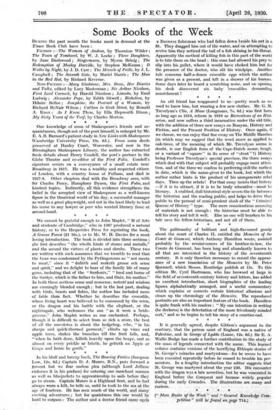* * * * An old friend has reappeared to
us—pretty much as we used to know him, but wearing a few new clothes. Mr. G. M. Trevelyan's Clio, A Muse (Longmans, 7s. 6d.) was first born as long ago as 1913, reborn in 1919 as Recreations of an Hist- orian, and now suffers a third incarnation under the old title, with the addition of three new essays on Bunyan, History and Fiction, and the Present Position of History. Once again, if we choose, we can enjoy that fine essay on The Middle Marches (in which may we suggest that the word sware as applied to oak-trees, of the meaning of which Mr. Trevelyan seems in doubt, is our English form of the Cape-Dutch swam., tough, or a variant of " square" in its sense of " stout " ?) History being Professor Trevelyan's special province, the three essays which deal with that subject will probably engage most atten- tion, and of the three we confess to preferring still the earliest in date, -which is the name-giver to the book, but which the author rather hints is the product of his unregenerate rebel days. Then up the rebels! For that essay insists that history —if it is to attract, if it is to be truly educative—must be literary. A crabbed, dull historical style severs the tie between the historian and the reading public, and helps to drive that public to the 'perusal of semi-prurient slush of the " Criminal Queens of History " type. The mere conscientious amassing of materials is not enough : the historian must be able to tell his story and tell it well. Else no one will hearken to his tale save his fellow-historians, and not all of them.




































 Previous page
Previous page